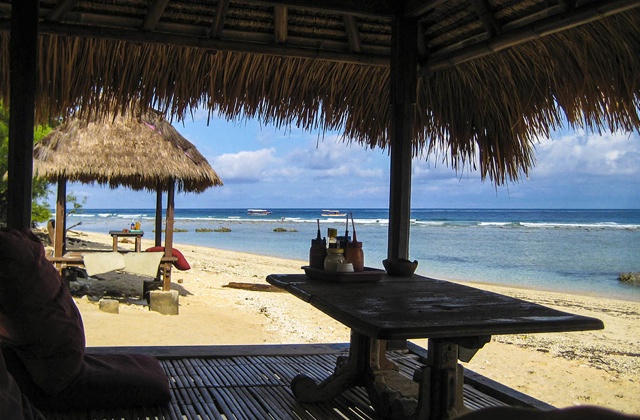 Tourist volumes increased in Indonesia during the review period (2008-2012), driven by promotional activity and an increase in domestic and international airline capacity and routes. Inbound tourist volumes expanded at a CAGR of 3.20% during the review period, and are expected to record marginal growth over the forecast period (2013-2017) at a CAGR of 1.29%.
Tourist volumes increased in Indonesia during the review period (2008-2012), driven by promotional activity and an increase in domestic and international airline capacity and routes. Inbound tourist volumes expanded at a CAGR of 3.20% during the review period, and are expected to record marginal growth over the forecast period (2013-2017) at a CAGR of 1.29%.
Synopsis
The report provides detailed market analysis, information and insights, including:
– Historic and forecast tourist volumes covering the entire Indonesian travel and tourism sector
– Detailed analysis of tourist spending patterns in Indonesia
– The total, direct and indirect tourism output generated by each category within the Indonesian travel and tourism sector
– Employment and salary trends for various categories in the Indonesian travel and tourism sector, such as accommodation, sightseeing and entertainment, foodservice, transportation, retail, travel intermediaries and others
– Detailed market classification across each category, with analysis using similar metrics
– Detailed analysis of the airline, hotel, rar rental and travel intermediaries industries
Scope
This?report provides an extensive analysis related to the tourism demands and flows in Indonesia:
– It details historical values for the Indonesian tourism sector for 2008?2012, along with forecast figures for 2013?2017
– It provides comprehensive analysis of the travel and tourism demand factors with values for both the 2008?2012 review period and the 2013?2017 forecast period
– The report provides a detailed analysis and forecast of domestic, inbound and outbound tourist flows in Indonesia.
– It provides employment and salary trends for various categories of the travel and tourism sector
– It provides comprehensive analysis of trends in the airline, hotel, car rental and travel intermediaries industries with values for both the 2008?2012 review period and the 2013?2017 forecast period
Key Highlights
– Indonesia has long-term travel and tourism growth potential. Growing disposable incomes and economic growth are expected to increase travel and tourism revenues over the forecast period. The steady flow of foreign investors and political stability will also add strength to travel spending for business purposes. In addition, government efforts to promote tourism and build tourism infrastructure will lead to growth in both domestic and international tourism over the forecast period.
– Indonesia’s domestic tourism growth is led by a rising middle-class population. In the first quarter of 2013, the National Statistics Bureau stated that Indonesians made 3.41% more trips, 55.7 million, compared to 53.86 million during the same period in 2012. Those with highest propensity to travel are residents from East Java, Central Java, West Java, Jakarta, North Sumatra, and Bali.
– Among Indonesia’s many tourist attractions, the government has identified 16 priority destinations to be developed in the coming years to attract international tourists in the country. The 16 destinations are Lake Toba, Pangandaran, the Borobudur and Prambanan areas, Yogya-Sleman, the Bromo-Tengger-Semeru area, Lombok and the Rinjani volcano, Flores, Wakatobi, Toraja, the Derawan islands, Pulau Weh in Aceh, the Togean islands, the Thousand Islands and Old Batavia, and Bali’s southern and northern coasts, as well as the area around Mount Batur.
– The termination of a fiscal tax imposed on Indonesians leaving the country encouraged outbound travel in 2011. The tax was previously imposed on all Indonesians, with the exception of those able to produce a Tax Identification Number. However, from January 2011, all Indonesians are able to travel abroad without have to pay the tax. International airlines such as Air Asia, Cebu Pacific and Tiger Airways began to offer promotional tickets for outbound travel, encouraging more Indonesians to engage in outbound travel.
– In May 2013, Garuda Indonesia airlines announced that the airline would be offering daily flights to Bandung in West Java from Bali. Batik Air also launched its Jakarta?Yogyakarta and Jakarta?Bali routes. The new Tigerair Mandala airline has also launched Jakarta?Yogyakarta flights using A320 aircraft. It also flies to Bali, Pekanbaru, Medan, and Surabaya.
– International hotel operators are focused on developing upscale or luxury hotels. Domestic and international hotel chains are therefore targeting this segment to increase their presence in Indonesia. There are 20 midscale Aston properties and 24 FavHotel properties by Aston international, 23 Harris properties and 23 Pop! Properties by Tauzia Hotel Management, and 13 Best Western properties by Best Western International and seven Zest properties by Swiss Bel-hotel scheduled to commence by 2014.
– The number of car rental operators in Indonesia increased by 10% from 2011 to reach 177 in 2012. Small operators in the car rental business in Indonesia continued to grow the number of car rental companies in the country, and the share of total car rental value sales by medium-sized operators increased during the year. The three leading car rental operators are Serasi Autoraya PT, CSM Corporatama PT and Adi Sarana Armada PT, which together accounted for 65% of the total car rental business in 2012.
– Demand for products and services offered by travel agents is likely to decrease in Indonesia over the forecast period due to a shift from using travel intermediaries to booking flights and accommodation online directly from airlines and hotel websites.
Click here to read more.

